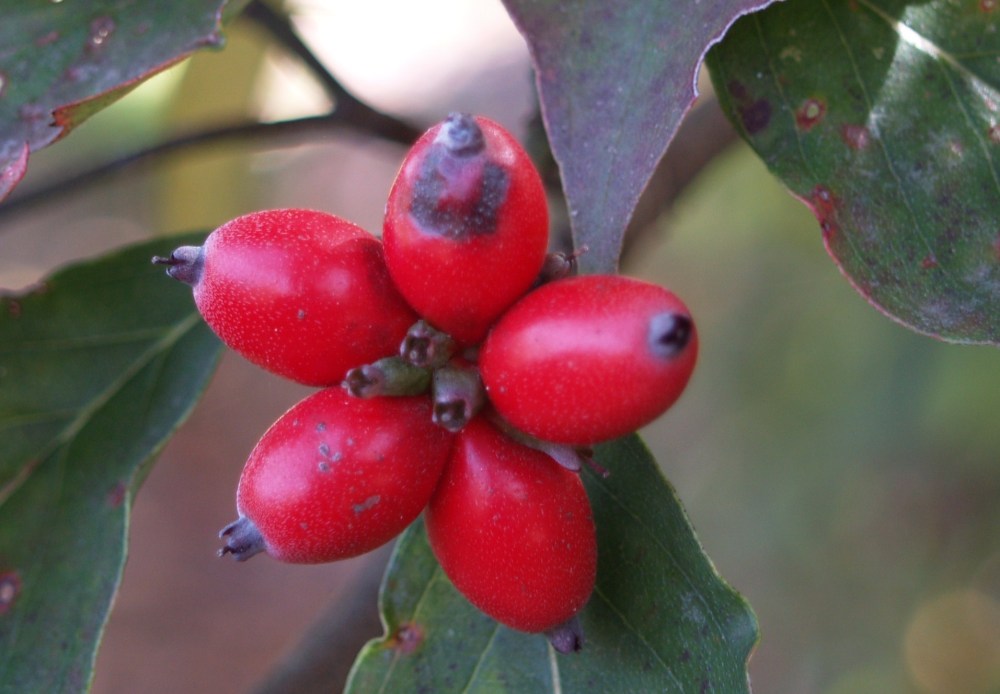The abundance of berries on hollies in the garden varies, being subject to weather conditions at the time of flowering that might discourage pollinators from being out and about. This year, there are no berries on the deciduous Winterberry hollies (Ilex verticillata ‘Winter Red’, below), which are otherwise healthy, but have exhibited fewer berries in recent years.
I suspect that this is not a result of inclement weather, but a pollinating male that has faded and finally disappeared, since berries were once abundant but have diminished noticeably. The pollinating male was not in this garden, so if I am to have berries I suppose I must plant one of my own. ‘Winterberry’ is quite unremarkable without the clusters of red berries, and a single ‘Southern Gentleman’ should do the trick. I must remember to plant one prior to the hollies flowering in late spring.
The variability in other hollies (Golden Girl holly, Ilex x meserveae ‘Mesgolg’, above) is not so obvious, and is most noticeable on hollies that are shaded so that flowering is diminished. There is no cure for this except to provide more sun, which is not so easily accomplished in this mature garden. So, with fewer berries, some hollies will be favored only for their evergreen foliage.
If the number of berries vary on the common Nandinas (Nandina domestica, above) the differences are not apparent. Each year heavily laden branches arch under the weight of the large clusters, which remain through the winter since birds rarely bother with them. Robins are scarce in the garden, but most often they are seen in late winter plucking berries from the nandinas that overhang the small pond just outside the kitchen window.
The bulk of the nandina’s berries turn brown by spring, and finally fall to the ground. There are areas where nandinas are considered invasive, I suspect because there are birds that favor the berries more than the few robins we have. Here, nandina’s spread is limited by the distance that the berries can roll, which seems to be only a few feet from the tall shrubs. 
Several years ago, an Oriental Bittersweet vine (Celastrus orbiculatus, above) was spotted growing from the thicket of brambles at the garden’s edge into a tall mulberry, which then tangled into uppermost branches of the yellow flowered ‘Elizabeth’ magnolia. Just as with the native bittersweet, the invasive Oriental vine has lovely berries, which at first caught my eye.
Investigation quickly confirmed the identity, and whether the vine was the Oriental or the native, it must be cut out of the magnolia. The invasive vine was cut down, dug out, and dragged out of the magnolia as best I could. I expected that I would have to monitor and cut out sucker growth from roots that would be left behind, but this was minimal and I have not noted further growth in the thicket.
I rarely note the last of the dogwood berries, though I expect they are quickly consumed in early November by birds as soon as they ripen. In mid December the largest dogwood in the front garden, and smaller trees in the rear, display only a few blackened berries. With plentiful berries on hollies and nandinas, the gardener is happy that birds take advantage of the garden’s abundance.